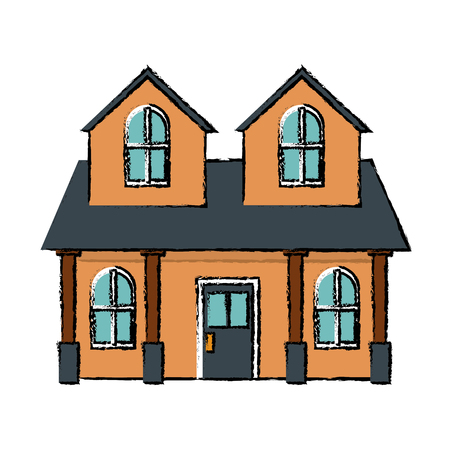Introduction: Understanding Feng Shui in a UK Context
Feng Shui, an ancient Chinese practice rooted in the harmonious arrangement of space, has gained international acclaim for its potential to enhance well-being and prosperity within the home. At its core, Feng Shui seeks to balance the flow of energy—or “qi”—through mindful positioning and design, ensuring that each element supports the overall harmony of a living environment. While traditionally developed in Eastern architectural settings, these principles can be thoughtfully translated into Western homes, including those found throughout the United Kingdom. British houses often possess unique architectural features—such as Victorian terraces, Edwardian semis, and modern flats—that reflect centuries of cultural evolution. When adapting Feng Shui to the UK context, it is essential to respect both the spirit of these historic spaces and the practicalities of contemporary British lifestyles. This guide will explore how key Feng Shui concepts, particularly those related to bathroom placement, can be sensitively applied to create homes that feel balanced, comfortable, and attuned to both Eastern wisdom and British sensibilities.
2. Traditional Feng Shui and the Role of Bathroom Placement
Feng Shui, an ancient Chinese philosophy centred on harmonising individuals with their surrounding environment, places significant emphasis on how different rooms affect the overall energy, or qi, within a home. Bathrooms, in particular, are often regarded as complex zones due to their association with water and waste. In classic Feng Shui teachings, these elements are believed to carry away positive energy if not properly contained or balanced, potentially impacting health, wealth, and wellbeing.
In UK homes—where bathrooms may be located on various floors and often adjacent to bedrooms or living spaces—the traditional principles become especially relevant. The direction of water flow, the positioning of drains, and even the materials used for bathroom interiors can subtly influence the energy dynamics throughout the property.
The Symbolism of Water and Waste in Feng Shui
Water represents both abundance and loss in Feng Shui. While flowing water can symbolise prosperity, unchecked or poorly directed water (as found in bathrooms) might result in financial leaks or diminished vitality. Similarly, waste elements embody stagnation and negativity, requiring thoughtful management to prevent adverse effects on household harmony.
Key Influences of Bathroom Placement in Classic Feng Shui
| Aspect | Traditional Feng Shui Interpretation | Common UK Home Scenarios |
|---|---|---|
| Bathroom Above Entrance | May lead to loss of welcoming energy; impacts career opportunities | Bathrooms on first floor directly over front door areas |
| Bathroom Facing Kitchen/Dining Room | Conflicts between water (bathroom) and fire (kitchen); affects family unity | Semi-detached homes with compact layouts |
| Bathroom Adjacent to Bedroom | Potential disruption to rest; weakens personal energy fields | Ensuite bathrooms attached to master bedrooms |
| Poor Drainage/Leaks | Symbolises financial loss; ongoing negative energy flow | Older Victorian or Edwardian homes with ageing plumbing systems |
Balancing Modern Needs with Ancient Wisdom
The interplay between tradition and practicality is crucial for UK homeowners seeking balance. Recognising classic Feng Shui guidance helps create more harmonious spaces by mitigating the disruptive influence of bathrooms through mindful placement and design adaptation. By understanding these foundational concepts, you can begin transforming your home’s energy flow while respecting both British architectural norms and time-honoured Eastern philosophies.

3. Common Bathroom Layouts in UK Homes
Understanding the influence of bathroom placement on home Feng Shui starts with a look at the typical layouts found across British homes. The UK’s diverse architectural heritage—from charming Victorian terraces to modern detached builds—presents an array of spatial arrangements, each offering unique energy dynamics and challenges from a Feng Shui perspective.
Semi-Detached Homes
Semi-detached houses are a staple in suburban Britain, often featuring bathrooms located either upstairs adjacent to bedrooms or tucked at the back of the ground floor. When bathrooms share walls with sleeping spaces, it may inadvertently disrupt restful energy flow according to Feng Shui principles. Additionally, back-of-house bathrooms can drain positive qi if not carefully balanced with earthy tones or thoughtful lighting.
Terraced Houses
Terraced homes, particularly common in older UK cities, frequently have narrow footprints with bathrooms positioned at the rear or even as later extensions. This layout can lead to bathrooms being distant from central living areas—a positive aspect for separating water elements from communal spaces but occasionally leading to dampened energy circulation towards the heart of the home.
Victorian Builds
Victorian properties, beloved for their period charm, originally lacked indoor bathrooms. Modern retrofits often place bathrooms in former bedrooms or side extensions. These conversions can sometimes create awkward door alignments or windows facing neighbouring homes—considered less auspicious in traditional Feng Shui due to potential privacy and energy leakage issues.
Contemporary Designs
Contemporary UK builds typically favour en-suite facilities and open-plan layouts. While en-suites provide convenience, their proximity to sleeping quarters requires extra attention: ensure that bathroom doors remain closed and incorporate natural elements like wood and plants to mitigate any energetic imbalance between water (bathroom) and rest (bedroom) zones.
Feng Shui Implications Across Layouts
Each typical British bathroom layout carries its own set of Feng Shui considerations. By recognising how semi-detached, terraced, Victorian, and contemporary designs shape the journey of energy through your home, you can make intentional choices—such as strategic mirror placement or subtle zoning—to harmonise your space. Ultimately, aligning your bathroom’s location with both practical needs and ancient wisdom allows for a more grounded and harmonious home environment.
4. Negative and Positive Effects of Bathroom Placement
In the context of UK homes, the positioning of bathrooms holds significant weight in Feng Shui practice. The energy flow—or ‘qi’—can be either enhanced or disrupted by where a bathroom is situated within the property. Understanding these effects enables homeowners to make informed design choices that reflect both British architectural traditions and Feng Shui principles.
Bathroom Near the Entrance
A bathroom positioned close to the main entrance is considered challenging in Feng Shui. The entrance is seen as the gateway for positive energy to enter your home. When a bathroom is too near, it may allow beneficial energy to escape before circulating through the living spaces. In many British homes, particularly Victorian terraces, compact layouts often mean bathrooms are situated near or even under staircases close to the front door—a configuration that may lead to feelings of restlessness or financial instability.
Potential Impacts Table
| Position | Negative Effects | Positive Effects |
|---|---|---|
| Near Entrance | Loss of positive energy (qi), reduced sense of welcome, potential financial drain | Convenience for guests, easy access after outdoor activities |
| Above Kitchen | Poor energy for health and nourishment, risk of disharmony in family meals | Efficient use of vertical space in terraced or semi-detached homes |
| Adjoining Bedrooms | Dampens restful energy, possible disturbance to sleep, privacy concerns | Modern comfort and en suite luxury, practical for families with children or elderly members |
Bathroom Above the Kitchen
The kitchen symbolises nourishment and wellbeing in Feng Shui, while the bathroom represents cleansing and waste removal. When a bathroom is located directly above the kitchen—a not uncommon scenario in two-storey British houses—it can introduce conflicting energies. This arrangement may impact family health and create underlying tension around shared meals. However, British building regulations often necessitate stacking wet rooms for plumbing efficiency, so thoughtful remedies such as reinforcing boundaries with colour or materials can help balance energies.
Bathroom Adjoining Bedrooms
An en suite bathroom is a hallmark of modern British home design, offering convenience and privacy. From a Feng Shui perspective, however, water elements near sleeping quarters may disrupt peace and relaxation. Excessive moisture or noise can interfere with restful sleep and personal harmony. Still, careful design—such as solid doors, effective ventilation, and soft furnishings—can help mitigate these challenges while maintaining comfort.
Summary: Balancing Practicality and Energy Flow
The placement of bathrooms in UK homes requires a sensitive balance between modern practicality and traditional Feng Shui principles. Awareness of both negative and positive effects empowers homeowners to adapt their spaces thoughtfully, enhancing wellbeing without compromising on comfort or local architectural character.
5. Practical Solutions: Enhancing Feng Shui in Challenging Bathroom Locations
When a bathroom’s location poses Feng Shui challenges, UK homeowners need solutions that are both functional and stylistically compatible with British interiors. By combining classic design sensibility with Feng Shui wisdom, you can transform problematic spaces into harmonious ones.
Strategic Use of Décor and Accessories
Opt for décor that subtly balances water and earth elements. For example, introduce natural stone soap dishes, woven baskets, or wooden shelving to ground excessive water energy. British ceramics—like classic white porcelain or hand-glazed tiles—offer elegance while supporting positive Qi flow. Incorporate lush, moisture-loving plants such as ferns or peace lilies, which thrive in UK climates and symbolise renewal.
Mitigating the Impact of Poor Placement
If your bathroom is near the front door or kitchen—a common concern in Victorian and Edwardian terraces—use solid-core doors and keep them closed to contain disruptive energy. Place a high-quality doormat outside the bathroom to symbolically “catch” escaping Qi before it enters living areas. For bathrooms above bedrooms, add a thick rug or runner on the upper floor to absorb negative energy.
Thoughtful Layout Adjustments
Reposition mirrors so they do not directly reflect toilets or drains, which can amplify undesirable energy. Instead, angle mirrors to reflect pleasant views or natural light from sash windows. If space allows, separate the toilet area from the bathing space with a frosted glass screen or classic panelled partition—both practical and in keeping with traditional British aesthetics.
Material Choices: A British Approach
Select materials that evoke warmth and stability. Slate and limestone flooring are enduring favourites in UK homes; their earthy tones balance watery influences. For wall colour, consider soft heritage hues like sage green or dove grey, which soothe and unify the space. Brass fixtures—a hallmark of British bathrooms—can introduce a touch of fire element, invigorating stagnant energy without overpowering serenity.
Lighting for Balance and Well-being
Good lighting is essential in balancing bathroom energy. Layer ambient ceiling lights with warm-toned sconces beside mirrors for a welcoming glow. Where possible, maximise daylight through frosted windows or skylights to encourage vibrant Qi circulation—an approach perfectly suited to often-overcast British weather.
Conclusion: Harmony Through Design
With mindful choices in layout, décor, and materials—tailored for UK homes—you can address even the most challenging bathroom placements. The result is a space where good design meets balanced energy, enhancing daily life while honouring both British style and Feng Shui principles.
6. Blending Traditional Feng Shui with Modern UK Interiors
Incorporating Feng Shui principles into contemporary British homes is not only possible but can create a beautifully balanced living space that respects both heritage and modernity. The challenge lies in harmonising ancient wisdom with the understated elegance of UK interiors—spaces often defined by period features, muted palettes, and a love for natural materials.
Choosing the Right Materials
When integrating Feng Shui, opt for natural materials that are already beloved in British design—think oak flooring, wool carpets, or stone tiles. These materials foster a grounding energy, aligning with the earth element in Feng Shui while maintaining the tactile comfort favoured in UK homes.
Respecting Spatial Flow
British homes, whether Victorian terraces or sleek new builds, benefit from clear sightlines and uncluttered layouts. Ensure bathroom doors do not directly face living areas or the front entrance; use subtle partitions, frosted glass, or shelving to redirect energy flow without sacrificing openness.
Integrating Colour and Light
Select calming, neutral colours such as soft greys, greens, or blues for bathrooms. These shades resonate with the tranquillity sought after in both Feng Shui and British décor. Maximise natural light where possible—skylights or frosted windows can invite positive Qi while preserving privacy.
Balancing Tradition and Lifestyle
Modern British life values practicality alongside tradition. Incorporate Feng Shui-approved features like plants (ferns or peace lilies thrive in humid bathrooms), concealed storage to minimise visual clutter, and quality fixtures with rounded shapes to soften energy. Embrace small decorative touches—a vintage mirror or locally crafted ceramics—to reflect personal taste while supporting harmonious Chi.
Cultural Sensitivity
Above all, blending Feng Shui with UK interiors is about respect: for your homes history, your daily routines, and the gentle art of balance. By thoughtfully merging these elements, you create a sanctuary that feels distinctly British yet universally harmonious.
7. Conclusion: Making Thoughtful Choices for Harmony at Home
As we’ve explored throughout this guide, the placement of your bathroom holds a unique influence on the flow and energy within UK homes. By understanding the principles of Feng Shui and recognising how British architectural nuances intersect with these ancient teachings, homeowners are empowered to make more informed decisions when designing or renovating their living spaces. Whether you’re rethinking an Edwardian terrace, a Victorian semi-detached, or a modern flat, the key takeaway is that mindful spatial planning can profoundly impact your sense of balance and comfort at home.
From ensuring bathrooms do not directly face front doors to considering their location in relation to bedrooms and communal areas, small adjustments can create significant improvements in the overall harmony of your property. Remember, there’s no one-size-fits-all approach—each home offers its own opportunities and challenges, so embrace solutions that respect both practical needs and the subtle energies of your space.
Ultimately, cultivating a harmonious environment is about more than following rules—it’s about attuning your design choices to support well-being and positivity for everyone under your roof. By integrating thoughtful Feng Shui insights into your UK home, you invite an atmosphere where tranquillity, health, and happiness can truly thrive.


